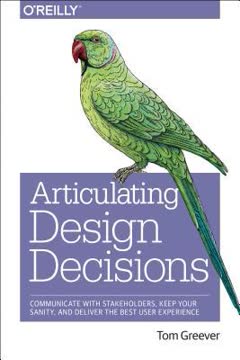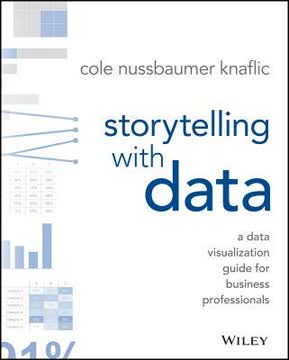Key Takeaways
1. Alignment diagrams visualize value creation between individuals and organizations
Alignment diagrams refer to any map, diagram, or visualization that reveals both sides of value creation in a single overview.
Holistic visualization. Alignment diagrams provide a comprehensive view of how individuals interact with organizations, showing both the customer experience and organizational processes side-by-side. This visual representation helps identify gaps, opportunities, and points of friction in the value exchange. Common types include customer journey maps, service blueprints, experience maps, and mental model diagrams.
Strategic insights. By illustrating the entire ecosystem of interactions, alignment diagrams offer strategic insights that can drive innovation, improve customer experience, and optimize business processes. They help break down silos within organizations by providing a shared reference point for different departments. This holistic view enables companies to design more coherent, end-to-end experiences that align with customer needs and expectations.
2. Frame the mapping effort by selecting perspective, scope, focus, and structure
Maps are purposefully focused. As the mapmaker, it's up to you to decide on what aspects to include and which to leave out.
Define parameters. When creating an alignment diagram, it's crucial to establish clear boundaries and focus. This involves:
- Choosing the perspective (e.g., customer, user, employee)
- Determining the scope (breadth vs. depth of the experience)
- Selecting the focus (which aspects to highlight)
- Deciding on the structure (chronological, hierarchical, spatial, or network)
Tailor to needs. The choices made in framing the mapping effort should align with the organization's goals and the intended use of the diagram. For example, a broad customer journey map might be appropriate for strategic planning, while a detailed service blueprint could be more useful for operational improvements. The key is to create a model that stakeholders agree on and find useful, relevant, and meaningful.
3. Identify touchpoints as critical points of interaction in the experience journey
A touchpoint is the means of value exchange between an individual and an organization.
Comprehensive inventory. Touchpoints encompass all interactions between customers and organizations, including advertisements, websites, apps, phone calls, physical locations, and human interactions. Creating a comprehensive inventory of touchpoints provides a foundation for understanding the entire customer experience.
Contextual understanding. Modern approaches to touchpoint analysis emphasize the importance of context. Rather than viewing touchpoints in isolation, consider:
- The circumstances surrounding each interaction
- The customer's needs and goals at that moment
- The emotional state of the customer
- The broader journey and how touchpoints connect
By taking a systemic view of touchpoints, organizations can design more coherent, meaningful experiences that reduce transitional volatility and strengthen customer relationships.
4. Recognize moments of truth as emotionally charged, relationship-defining interactions
Moments of truth are critical, emotionally charged interactions. They usually happen when a person has invested a high degree of energy in a desired outcome.
Identify key moments. Moments of truth are pivotal interactions that can make or break a customer relationship. These often occur when:
- The customer has invested significant time, energy, or resources
- There's a high emotional stake in the outcome
- The interaction represents a critical decision point
Design for impact. Organizations should focus on identifying and optimizing these crucial moments. Strategies include:
- Anticipating potential moments of truth in the customer journey
- Preparing staff and systems to handle these interactions effectively
- Turning potential negative experiences into positive ones (e.g., Twitter's "fail whale")
- Aligning resources to ensure consistently positive outcomes at these critical junctures
By mastering moments of truth, companies can create lasting positive impressions and build stronger customer loyalty.
5. Focus on creating multidimensional value beyond just functional benefits
Value is a perceived benefit.
Multifaceted value. Customer value extends beyond mere functionality. It encompasses:
- Functional value: Practical utility and performance
- Social value: Enhancement of social self-concept
- Emotional value: Ability to arouse feelings or affective states
- Epistemic value: Capacity to arouse curiosity or provide novelty
- Conditional value: Usefulness in specific situations or contexts
Premium value creation. To truly differentiate, organizations should strive to create premium value that provides deeper meaning and personal identity. This can include:
- Accomplishment: Pride in achieving goals
- Community: Sense of connectedness
- Creation: Satisfaction of producing something
- Freedom: Living without constraints
- Security: Freedom from worry about loss
By addressing these multidimensional aspects of value, companies can create more meaningful, impactful experiences that resonate on a deeper level with customers.
6. Use jobs-to-be-done framework to understand customer motivations and needs
People "hire" products and services to get a job done.
Holistic perspective. The jobs-to-be-done (JTBD) framework shifts focus from customer demographics to the circumstances and motivations driving product or service use. It considers three dimensions:
- Functional job: The practical task to be accomplished
- Emotional job: The feelings desired while completing the job
- Social job: How the person wants to be perceived by others
Context is key. Understanding the full context of the job is critical. This includes:
- The situation triggering the need
- Constraints and limitations
- Desired outcomes and success criteria
- Alternatives and competition
By focusing on jobs rather than products or customer segments, organizations can uncover unmet needs and innovate more effectively. This approach aligns well with experience mapping, as it provides a lens for understanding the deeper motivations behind customer actions and decisions throughout their journey.
7. Combine mental models and jobs-to-be-done to identify innovation opportunities
The approach combined mapping out user behaviors and motivations through a mental model diagram and prioritizing the users' needs using jobs to be done theory.
Integrated approach. Combining mental model diagrams with jobs-to-be-done analysis provides a powerful framework for identifying innovation opportunities:
- Create a mental model diagram based on user research to visualize behaviors, motivations, and thought processes
- Overlay current product offerings onto the mental model to identify gaps and misalignments
- Use JTBD analysis to prioritize user needs and desired outcomes
- Identify opportunities for innovation by focusing on unmet or poorly met jobs-to-be-done
Actionable insights. This integrated approach offers several benefits:
- Provides a visual map of the user landscape
- Highlights areas where current offerings fall short
- Prioritizes opportunities based on user needs and motivations
- Guides product development decisions with a user-centered focus
By combining these methodologies, organizations can create a robust foundation for innovation that aligns closely with user needs and behaviors, increasing the likelihood of developing successful products and services.
Last updated:
Review Summary
Mapping Experiences by James Kalbach receives mostly positive reviews, with readers praising its comprehensive coverage of experience mapping techniques. Many find it an essential reference for product managers, UX experts, and designers. The book is lauded for its practical examples, case studies, and visual representations. Some readers appreciate the in-depth exploration of various diagram types and strategies for customer experience improvement. However, a few reviewers find the content overwhelming or overly complicated. Overall, it's considered a valuable resource for those involved in product development and customer experience design.
Similar Books










Download PDF
Download EPUB
.epub digital book format is ideal for reading ebooks on phones, tablets, and e-readers.




